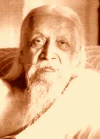Yoga Philosophy
Tantra तन्त्र
अन्य लिंक : |आत्मा | मोक्ष | भारतीय दर्शन | Tantra तन्त्र |
![]() Tantra – A Loom, A Thread, Posterity, An
uninterrupted series, etc.
Tantra – A Loom, A Thread, Posterity, An
uninterrupted series, etc.
![]() तन्त्र
से अभिप्राय है- तन्त्र का शाब्दिक उद्भव इस
प्रकार माना जाता है - “तनोति
त्रायति तन्त्र”
। जिससे अभिप्राय है –
तनना, विस्तार, फैलाव इस प्रकार इससे त्राण होना
तन्त्र है।
तन्त्र
से अभिप्राय है- तन्त्र का शाब्दिक उद्भव इस
प्रकार माना जाता है - “तनोति
त्रायति तन्त्र”
। जिससे अभिप्राय है –
तनना, विस्तार, फैलाव इस प्रकार इससे त्राण होना
तन्त्र है।
![]() तन्त्र
हिन्दू, बौद्ध तथा जैन दर्शनों में तन्त्र
परम्परायें मिलती हैं। यहाँ पर तन्त्र साधना
से अभिप्राय गुह्य या गूढ़ साधनाओं से किया जाता रहा है।
तन्त्र
हिन्दू, बौद्ध तथा जैन दर्शनों में तन्त्र
परम्परायें मिलती हैं। यहाँ पर तन्त्र साधना
से अभिप्राय गुह्य या गूढ़ साधनाओं से किया जाता रहा है।
![]() Tantra are equally applicable in Hinduism,
Buddhism and Jainism. They include esoteric practices of above philosophical
traditions.
Tantra are equally applicable in Hinduism,
Buddhism and Jainism. They include esoteric practices of above philosophical
traditions.
![]() तन्त्रों को
वेदों के काल के बाद की रचना माना जाता है। और साहित्यक रूप में जिस प्रकार पुराण
ग्रन्थ मध्ययुग की दार्शनिक-धार्मिक रचनायें माने जाते हैं उसी प्रकार तन्त्रों में
प्राचीन-अख्यान, कथानक आदि का समावेश होता है। अपनी विषय वस्तु की दृष्टि से ये
धर्म, दर्शन, सृष्टिरचना शास्त्र, प्रचीन विज्ञान आदि के इनसाक्लोपीडिया भी कहे जा
सकते हैं।
तन्त्रों को
वेदों के काल के बाद की रचना माना जाता है। और साहित्यक रूप में जिस प्रकार पुराण
ग्रन्थ मध्ययुग की दार्शनिक-धार्मिक रचनायें माने जाते हैं उसी प्रकार तन्त्रों में
प्राचीन-अख्यान, कथानक आदि का समावेश होता है। अपनी विषय वस्तु की दृष्टि से ये
धर्म, दर्शन, सृष्टिरचना शास्त्र, प्रचीन विज्ञान आदि के इनसाक्लोपीडिया भी कहे जा
सकते हैं।
![]() In
the orthodox classification of Hindu religious literature, Tantra refers to a
class of post-Vedic Sanskrit treatises similar to the Purāṇas
(medieval encyclopaedic collections of myths, legends, and other topics).
In
the orthodox classification of Hindu religious literature, Tantra refers to a
class of post-Vedic Sanskrit treatises similar to the Purāṇas
(medieval encyclopaedic collections of myths, legends, and other topics).
तन्त्रों के विषय वस्तु को मोटे तौर पर निम्न तौर पर बतलाया जा सकता है-
ज्ञान, या दर्शन,
योग,
कर्मकाण्ड,
विशिष्ट-साधनायें, पद्धतियाँ तथा समाजिक आचार-विचार के नियम।
The subject material of Tantras may be defined as-
(1) knowledge, or philosophy,
(2) yoga,
(3) ritual, which includes the formation of icons and the building of temples, and
(4) conduct in religious worship and social practice.
Ř सांख्य तथा वेदान्त के अद्वैत विचार दोनों का प्रभाव तन्त्र ग्रन्थों में दिखलायी पड़ता है। तन्त्र में प्रकृति के साथ शिव अद्वैत दोनों की बात की गयी है। परन्तु तन्त्र दर्शन में ‘शक्ति’(ईश्वर की शक्ति) पर विशेष बल दिया गया है।
Ř The philosophy of Tantra may be called similar to that of Samkhya and Vedanta(monistic). But they much emphasis on the shakti or god's power.
Ř तन्त्र की तीन परम्परायें मानी जाती हैं –
-
Ř शैव आगम या शैव तन्त्र,
-
Ř वैष्णव संहितायें, तथा
-
Ř शाक्त तन्त्र
A. Śaiva Āgamas,
B. Vaiṣṇava Saṃhitās, and
C. Śākta Tantras.
(A) शैव आगम – शैव आगमों की चार विचारधारायें हैं –
शैवसिद्धान्त,
तमिल शैव,
कश्मीरी शैवदर्शन, तथा
वीरशैव या लिंगायत शैव दर्शन
The Śaiva agamas - Described as four Śaivite sects that follow the agamic tradition. These are the school of :
1. Śaivasiddhānta,
2. the Tamil Śaivas,
3. the Kashmir Śaivas, and
4. theVīraśaivas, who are also known as the Liṅgāyats.
आगमों की भारतीय परम्परा में अत्यन्त महत्वपूर्ण स्थान है। प्राचीन मन्दिरों, प्रतिमाओं, भवनों, एवं धार्मिक-आध्यात्मिक विधियों का निर्धारण इनके द्वारा हुआ है।
The agamas provide a considerable amount of information on the earliest codes of temple building, image making, and religious procedure.
(1) शैव सिद्धान्त – प्रचीन तौर पर शैव सिद्धान्त के अन्तर्गत 28 आगम तथा 150 उपागमों को माना गया है।
शैव सिद्धान्त के अनुसार सैध्दान्तिक रूप से शिव ही केवल चेतन तत्त्व हैं तथा प्रकृति जड़ तत्त्व है। शिव का मूलाधार शक्ति ही है। शक्ति के द्वारा ही बन्धन एवं मोक्ष प्राप्त होता है।
(1) The Śaiva-siddhānta -
· traditionally has 28 Āgamas and 150 sub-Āgamas
· Their doctrine states that Śiva is the conscious principle of the universe, while matter is unconscious. Śiva's power, or shakti, personified as a goddess, causes bondage and release. She is also the magic Word, and thus her nature can be sought out and meditated upon in mantras.
|
|
कश्मीरी शैवदर्शन – प्रमुख ग्रन्थ शिवसूत्र है। |
|
|
इसमें शिव की प्रत्यभिज्ञा के द्वारा ही ज्ञान प्राप्ति को कहा गया है। |
|
|
जगत् शिव की अभिव्यक्ति है तथा शिव की ही शक्ति से उत्पन्न या संभव है। |
|
|
इस दर्शन को ‘त्रिक’ दर्शन भी कहा जाता है क्योंकि यह – शिव, शक्ति तथा जीव(पशु) तीनों के अस्तित्व को स्वीकार करता है। |
(2) Kashmir Śaivism –
§ Basic text is Śivasūtra
§ emphasis is placed on the continuous recognition of Śiva;
§ the world is a manifestation of Śiva brought about by his shakti.
§ The system is called trika (“triad”), because it recognizes the three principles of Śiva, Śakti, and the individual soul.
वीरशैव दर्शन –
इस दर्शन का महत्पूर्ण ग्रन्थ “वाचनम्” है जिससे अभिप्राय है ‘शिव की उक्ति’।
यह दर्शन पारम्परिक तथा शिव को ही पूर्णतया समस्त कारक, संहारक, सर्जक मानता है। इसमें जातिगत भेदभाव को भी नहीं माना गया है।
इस दर्शन के अन्तर्गत गुरु परम्परा का विशेष महत्व है।
(3) Vīraśaiva –
· Texts - Vācanams (“Sayings”) of Basava.
· The sect is puritanical, worships Śiva exclusively, rejects the caste system in favour of its own social organization, and
· highly structured with monasteries and gurus.
वैष्णव संहिता – वैष्णव संहिता की दो विचारधारायें मिलती हैं – वैखानस संहिता, तथा पंचारात्र संहिता।
वैखानस संहिता – यह वैष्णव परम्परा के वैखानस विचारधारा है। वैखानस परम्परा प्राथमिक तौर पर तपस् एवं साधन परक परम्परा रही है।
पंचरात्र संहिता – पंचरात्र से अभिप्राय है – ‘पंचनिशाओं का तन्त्र’। पंचरात्र परम्परा प्रचीनतौर पर विश्व के उद्भव, सृष्टि रचना आदि के विवेचन को समाहित करती है। इसमें सांख्य तथा योग दर्शनों की मान्यताओं का समावेश दिखायी देता है। वैखानस परम्परा की अपेक्षा पंचरात्र परम्परा अधिक लोकप्रचलन में रही है। इसके 108 ग्रन्थों के होने को कहा गया है।
(B) Vaishnava Saṃhitās are two groups of texts:
Vaikhānasa Saṃhitās and
Pāńcarātra Saṃhitās.
Vaikhānasa Saṃhitā : is collections of the Vaishnava school of Vaikhānasas, who were originally ascetics seem to have embodied the original temple manuals for the Bhāgavatas (devotees).
Pāńcarātra Saṃhitās : Means, “the System of the Five Nights”. The philosophy of Pāńcarātra Tradition is largely concerns with and include the matter of cosmogony, inspired by both the Sāṃkhya and yoga philosophies. Pāńcarātra is more prevailing than Vaikhānasa school, its literature consists of 108 texts.
वैष्णव परम्परा में भक्ति वादी विचारधारा के अतिरिक्त शक्ति का सिद्धान्त भी समाहित है।
- Apart from their theology, in which for the first time the notion of shakti is introduced into Vaishnavism,
- वैष्णव संहिता में वैष्णव मंदिरों तथा अर्चना, कर्मकाण्ड का विवेचन या कारण मिलता है।
- They give an exposition of Vaishnava temple and cult practices.
- वैष्णव के दर्शन के अनुसार वासुदेव कृष्ण ही परम तत्त्व है। तथा अपने चार व्यूहों के द्वारा सृष्टि के चार स्वरूपों में प्रकट होते हैं। ये चार व्यूह हैं – वासुदेव, संकर्षण, अनिरूद्ध, प्रद्युम्न।
- On the philosophical side it is maintained that the supreme god Krishna Vāsudeva manifests himself in four co-equal “divisions” (vyūhas), representing levels in creation. These gods emanate as supra mundane patrons before the primary creation is started by their shakti (power). In the primary creation Śakti manifests herself as a female creative force inspired by the Sāṃkhya philosophy's cosmogony. Practically, stress is laid on a type of incarnation—“iconic incarnation”—in which the god is actually present with a portion of himself in a statue, which thus becomes an icon; therefore the icon can be worshiped as God himself.
(C) Śākta Tantras –
· Emphasize the goddess Śakti (Shakti) as the female personification of the creative power or energy of the god. This view taken to its extreme holds that Śiva (Shiva) without his Śakti is like a corpse.
· In the Tantras that deal with yoga, Śakti is identified with the kuṇḍalinī, or the energy that lies coiled at the base of the spine until brought up through the body by yogic disciplines.
· The Tantras also stress the efficacy of yantras and maṇḍalas (ritual diagrams) and of mantras (mystic syllables or sacred formulas).
· Among the major Śākta Tantras are the Kulārṇava, which treats of Vamacara practices, such as ritual copulation; the Kulacūḍāmaṇi, which discusses ritual; and the Śaradātilaka, which deals almost exclusively with magic.

